Parting Line in Injection Molding
A parting line is a distinct line indicates the points at which cores and cavity join in injection mold. That is, a section where injection mold come together.
Vertical Parting Line
The vertical parting line lies at a right angle to the mold’s axis. You can choose this line type, especially for symmetrical molds or components which require easier separation.
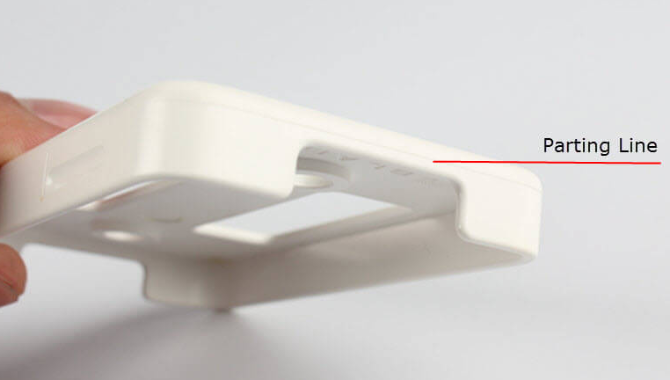
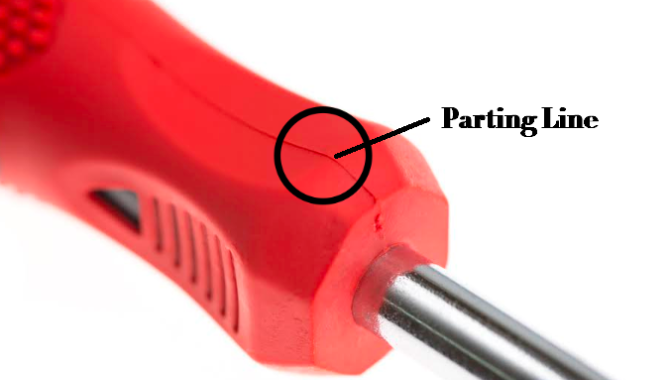
Beveled Parting Line
The beveled parting line in injection molding is a line that shows deviation from the straight horizontal and vertical lines. It features inclination at some specific angle. This parting line ensures the creation of intricate and complex designs, which is impossible with straight parting lines.
Curved Parting Line
These lines follow a curvy path, unlike a straight path. You can use this line in injection molding to manufacture complex designs. For instance, components with contour surfaces and ergonomic grips. In this case, a beveled and straight line does not serve the purpose.
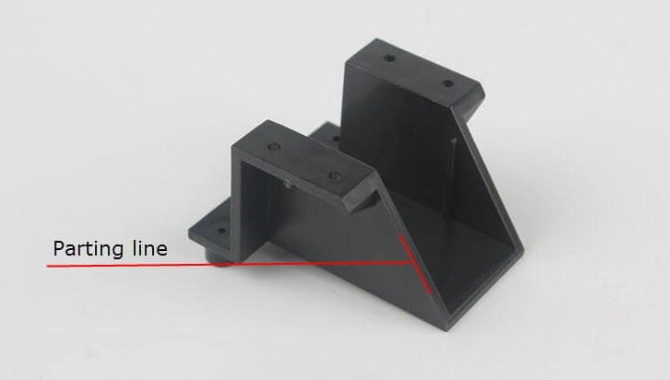
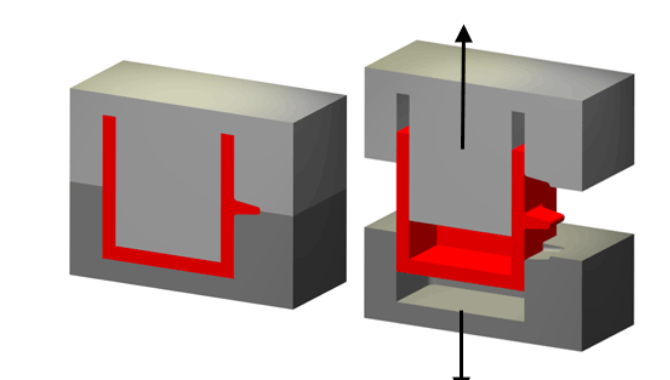
Stepped Parting Line
The stepped parting line is a line of its kind. This line is excellent for components featuring steps or varying heights in design. Creating these lines demands extra effort to achieve perfect alignment and accurate separation.
Comprehensive Parting Line
As the name suggests, the comprehensive parting lines form components featuring multiple-line combinations. This will ultimately lead you to create complex geometry components with super convenience.
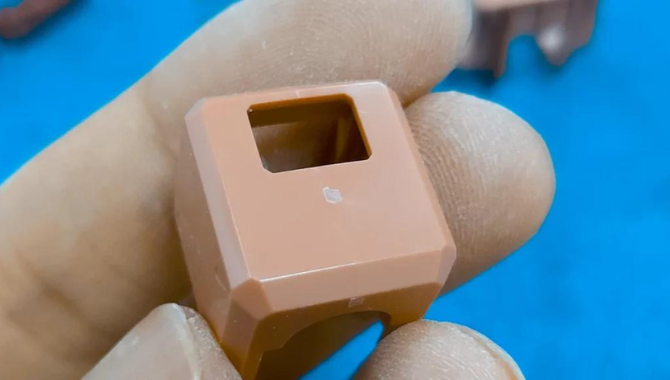
Design Considerations for Parting Line in Injection Molds


There are multiple design considerations exist when it comes to the formation of parting lines. Some of the critical reviews that need your attention include:
Mold Design
The mold design plays a vital role in forming highly effective parting lines. For this, you need to consider the total components of the mold, material selection, and arrangement. This will lead you to experience high-end quality parts.
Opening Direction
Mold opening direction plays a crucial role in determining the parting line. Ultimately, this influences mold separation, minimizes damage, and contributes to smoother demolding. So be careful when you are selecting the opening direction of the mold.
Component Placement
Component placement also affects the formation of the parting line and the end features of the component. Correctly place the details, such as inserts, pins, and slides. This way, you can eliminate or minimize interference with the component geometry. By keeping these considerations, you can contribute to an effective molding process.
Walls Drafting
The drafting of the walls plays a crucial role in mold ejection. Drafting means tapering the sharp corners or edges. Doing so can reduce the chance of parts stuck inside the mold.
Ejection
The role of the ejection is to facilitate the molded components’ ejection from the cavity. Carefully locate and design the ejection pins. Neglecting this can lead you to face the marks over the component’s surface. This may also damage the element during the ejection process.
Determination of the Parting Line Location


The position and shape of the molded component play a significant role in parting line placement determination. Determine the direction in which you want to cut the mold hole. This eases the process of locating the parting line. Please note that the Projection of the parting line is in the direction of the projection of the plastic component.
When it comes to two-color molds, there exist three classifications for parting lines:
- Suppose a straight line crosses the surface of the object. The point of joining the straight line and straight line segment represents the parting line’s point.
- The point of intersection of the straight line segment and the straight line is the beginning point for the parting line.
- The core pulling decides the parting line location if multiple intersections exist between the lines. The core pulling is determined based on the numerous intersection points of lines.
Parting Line Challenges and Mitigation Measures


Multiple challenges you can face while dealing with the parting lines. Some of the key challenges include:
Complex Shapes
It is harder to locate the parting lines for complex shapes than for simpler forms. You can only sometimes find it in the middle of the component. Designers hide the lines to contribute to overall product or component aesthetics. Depending on the part shape and design, you can locate it on component edges or randomly.
Material Impacts
The material also determines if locating the parting line location will be more straightforward. For instance, take into consideration the silicone rubber. This material in molten form can lead to superior dimensions and leads to thinner wall creation. This makes it even harder to locate the parting line as such materials hide the parting line incredibly.
Tight Tolerances
When the molten material enters the mold, the mold shape dramatically affects the material distribution. Collectively it affects the cooling process, solidification, and shearing rate. If not controlled well, it can lead to stress and poor component functioning. Make sure the mold shape allows the material to take up the space as required, resulting in tight tolerances.





